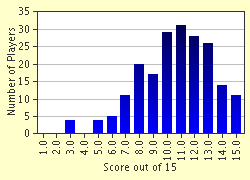Quiz Answer Key and Fun Facts
1. The Black Hand's first attempt to kill Franz Ferdinand on June 28, 1914 was successful.
2. Where did Canada do most of its fighting?
3. Which of these four major battles involving the Canadian was described by Germans as "das Blutbad" (the "Bloodbath")?
4. Which Canadian Ace had 72 victories?
5. Approximately how many Canadian soldiers died in WWI?
6. What was wrong with the Ross Rifle?
7. Which of the Canadian battles was described as a great victory, lasted a mere four days, had 10,600 casualties, and had all four Canadian divisions fighting?
8. The main aim of the Schlieffen Plan was to knock France out of the war within about six weeks.
9. What did Canadian Prime Minister Robert Borden introduce in 1917 to ensure Canada had troops to send to war?
10. Berlin, Ontario was pressured into changing its name because it was also the name of a city in enemy territory. What was "Berlin" in Ontario later changed to?
11. What occurred on December 6, 1917?
12. Which of the four major Canadian battles had so much rain and mud that many men drowned?
13. Why did Canada enter WWI?
14. How were Canadian women involved in the war?
15. What formally ended the war?
Source: Author
michrocks164
This quiz was reviewed by FunTrivia editor
bloomsby before going online.
Any errors found in FunTrivia content are routinely corrected through our feedback system.


